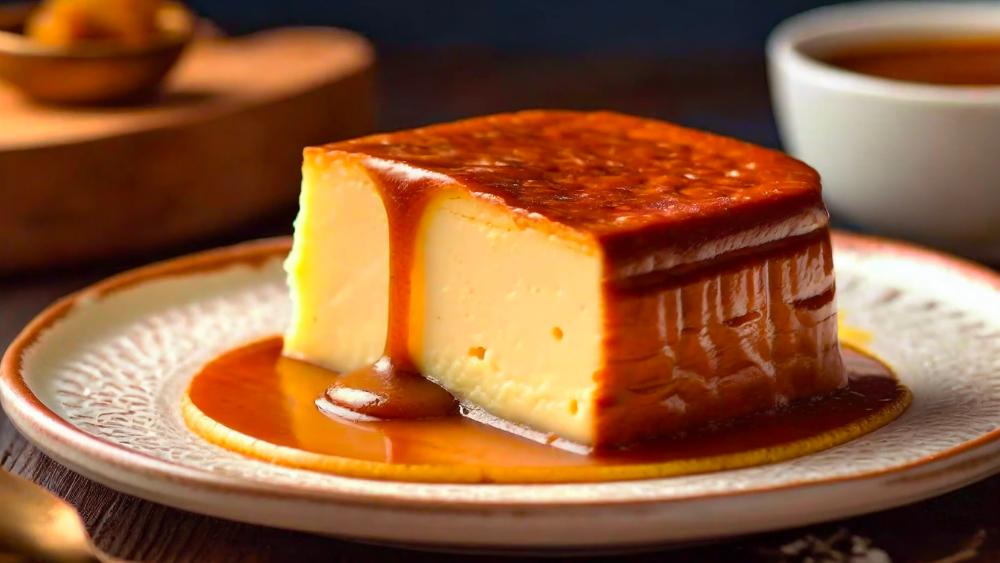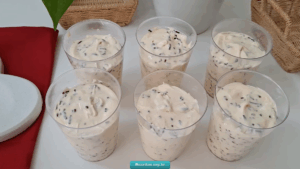
If we talk about desserts, there is nothing better than a creamy, unctuous and very sweet texture. So welcome friends to the cheese recipe! Name that, if they are not within Venezuela, may refer them to salty tastes.
And that’s what we’re going to talk about because in this case cheese is a dessert. With a flan texture and caramel, it is ideal to indulge yourself or satisfy a craving. The only important thing to keep in mind is correct preparation of the candy and special care when removing it from the mold.
Come on, cheer up, I’m sure it’s going to turn out well. And if not, it is eaten the same, with dulce de leche, manjar, dulce de cajeta or whipped cream. Because the important thing is the intention and the flavor where by mixing these ingredients, it is impossible for it not to be delicious.
About quesillo and its variants
It is a dessert traditionally associated with Venezuelan cuisine.. It is an exquisite homemade flan with a soft consistency and sweet flavor, which has gained popularity not only in Venezuela, but in other parts of Latin America. In some countries we know it as condensed milk flan.
This delicacy is characterized by its silky texture and its delicious vanilla aroma, in addition to its characteristic golden color which is achieved thanks to the caramel that surrounds it. In the home environment, preparation is an activity that has been passed down from generation to generation, passed down from grandmothers to grandchildren.
The preparation of homemade cheese involves the combination of simple ingredients such as eggs, condensed milk, evaporated milk and vanilla essencewhich are skillfully mixed to achieve the characteristic texture and flavor of this dessert.
Why cheese?
The name “quesillo” for the Venezuelan dessert has roots in the gastronomic and linguistic heritage of the region. The term comes from the diminutive of “cheese”, suggesting the relationship with the soft and creamy texture of the dessert..
This choice of name highlights the similarity in consistency between Venezuelan quesillo and some fresh cheeses, although the preparation and ingredients differ significantly.
Historically, the influence of Spanish colonization in Venezuela could have contributed to the adoption of terms related to baking and dairy. The tendency to use The ending “-illo” as a diminutive is common in Spanish, and in this context, it is used to convey the idea of something smaller and more beloved, in this case, a dessert appreciated in Venezuelan culture..
Origin and history of cheese
Its history dates back to the cultural and culinary influences that merged in the region over the centuries. Its creation can be attributed to the mixture of techniques and flavors of Spanish origin with indigenous ingredients from Venezuela.
During colonization, the arrival of new ingredients and preparation methods led to the evolution of local gastronomy, leading to the creation of unique desserts like this dessert.
The combination of eggs, condensed milk and vanilla essence, essential ingredients in the preparation of this recipe, reflects the adaptation of European recipes to local availability. The ease of finding and producing these elements in Venezuela contributed to the popularization of the dessert.
A variant, the milk cheese
It is a variant of the classic Venezuelan dessert that stands out for its softness and delicacy in each bite. Unlike the conventional recipe that uses condensed milk and evaporated milk, Quesillo de leche is characterized by using liquid milk, which gives it an even creamier texture.
It is It is cooked either in a bain-marie or in the oven, depending on the chef’s preference, until the desired firmness and creaminess is reached. It is distinguished by its more subtle flavor and silky texture, becoming an option appreciated by those looking for a lighter variant of the traditional Venezuelan dessert.
Peruvian quesillo, a very different cheese from the Venezuelan one
In Peru, the term “quesillo” has a different connotation compared to the Venezuelan dessert of the same name. In the Peruvian context, it commonly refers to a type of fresh cheese with an elongated shape and soft texture..
This cheese is a popular and versatile option in Peruvian cuisine, used in a variety of dishes and culinary preparations. Peruvian cheese is known for its mild flavor and ability to melt easily.which makes it an appreciated component in dishes such as potatoes a la huancaína or humitas.
This fresh cheese adds a unique creaminess and a dairy touch to recipes, complementing traditional flavors of Peruvian cuisine. Keep in mind that, despite sharing the name with the Venezuelan dessert, the Peruvian dessert is an integral part of daily cuisine in the Andean country.
Follow me on Instagram (here)
And on YouTube I upload new videos every week (click here)
Cheese recipe
Yield: 8 servings
Preparation time: 1 hour 25 minutes
Ingredients
- 4 eggs
- 400 g of condensed milk
- 370 g evaporated milk
- 1 Teaspoon vanilla extract
- 1 cup of sugar for the caramel
How to make cheese in 5 points
- In a flan mold, add the sugar and put over medium heat until you obtain a golden caramel. Rotate the mold to make sure it evenly covers the base and sides.
- In a bowl, beat the eggs well. Add the condensed milk and evaporated milk, mixing. Add the vanilla essence and continue beating.
- Pour the mixture into the mold. Cover the mold with aluminum foil and place it in a baking dish with hot water to cook in a bain-marie.
- Preheat the oven to 180°C. Bake for 1 hour or until a toothpick inserted comes out clean.
- Let cool to room temperature and refrigerate for at least 4 hours. Once it is very cold, run a knife around the edges of the mold and turn the cheese onto a plate to unmold it.
Source: www.paulinacocina.net


